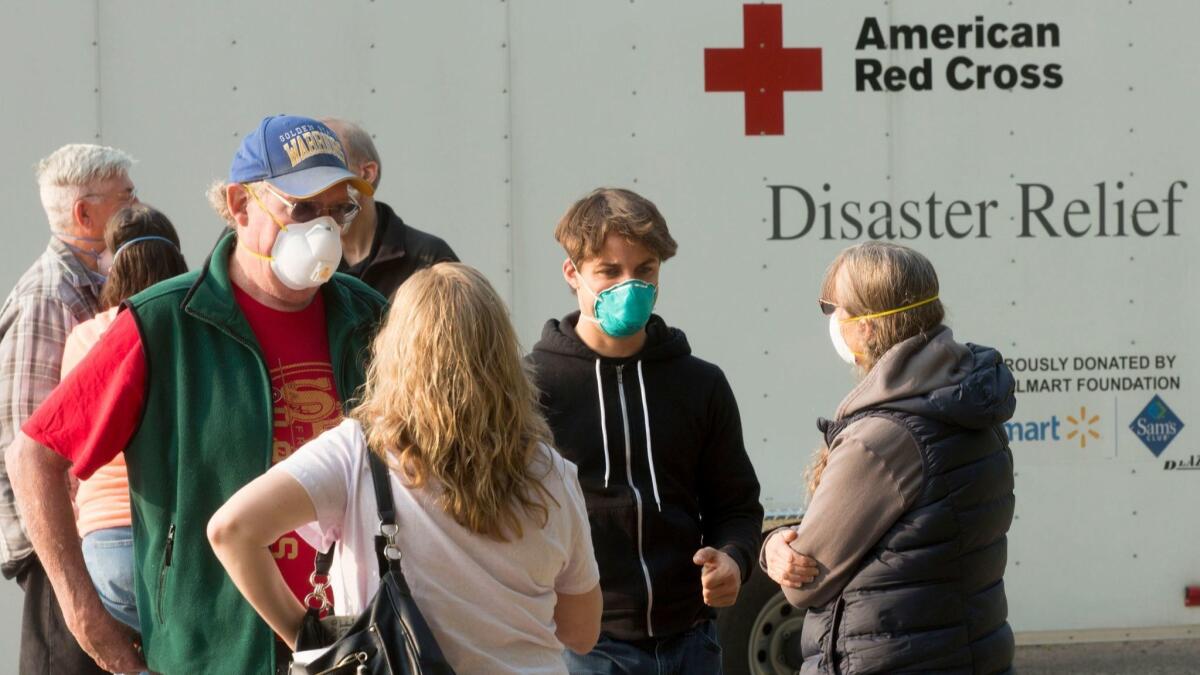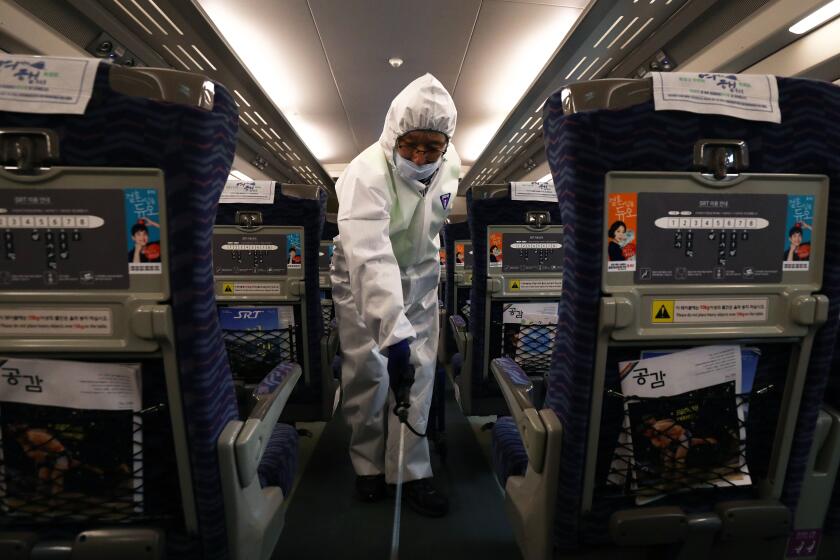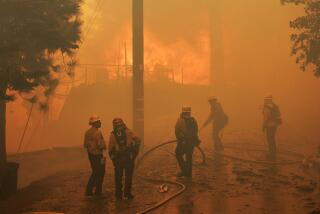Coronavirus complicates California wildfire preparation, raising worry over evacuation shelters

With the traditional start of California’s dreaded wildfire season approaching, the spread of the coronavirus has threatened to complicate state firefighting efforts.
Although top emergency officials say they are hopeful that the spread of COVID-19 will taper off by the time serious fire weather arrives in the fall, the outbreak has already forced departments to put large training exercises on hold, cancel controlled burns and delay inspections of fire-prone properties in Los Angeles.
Of greatest concern to American Red Cross officials is preventing the spread of illness at evacuation centers, which can quickly grow crowded with evacuees of all ages.
Another question is how battalions of firefighters might guard against the pathogen while battling flames in close formations, or while eating and sleeping in fire base camps that were notorious for outbreaks of “camp crud” even before the pandemic.
“If it were to happen this minute, we’re really going to have to step it up to have more facilities so we don’t have more folks crammed in there at the end of the day,” said Kim Zagaris of the California Governor’s Office of Emergency Services.
However, Zagaris, who was pulled out of retirement to help deal with the coronavirus outbreak, said he hoped that statewide social distancing orders would limit the effects of the coronavirus months from now. “We’re all in the same boat and hoping that — at least here in California — that we got folks working from home, staying at home, that we’ll get out of this a little sooner than the other folks have,” he said.
In just the last few years, California has experienced some of its deadliest and most destructive wildfires on record, and officials say climate change is increasing the likelihood of such devastating blazes in the future. These larger fires have required ever larger numbers of firefighters who travel throughout California or come from other states to assist.
Under such circumstances, illnesses can be spread from fire incident to fire incident as personnel are reassigned, according to the National Wildfire Coordinating Group. “Wildland fire incident management activities create an ideal environment for the transmission of infectious diseases: high-density living and working conditions, lack of access to and use of soap and sanitizers, and a transient workforce,” according to a guidance published by the group’s Emergency Medical Committee.
Governments and health officials around the world are trying to mitigate the spread of the coronavirus outbreak.
Similar concerns are shared by the Red Cross.
“We will only open a shelter if health officials think it’s safe to do so and we’re taking every precaution,” said Trevor Riggen, senior vice president of disaster cycle services for the American Red Cross.
Those precautions would start the moment evacuees arrive at the shelter, where they’d find workers wearing protective gear.
All arriving evacuees would have their temperature taken before entering — if they’re running a fever, they’d be taken to a different area for isolation away from the rest of the evacuated community, Riggen said. Those who are allowed in would still have their temperature taken three times a day, like the shelter workers.
Inside, there will be extra hand-washing stations, while sleeping cots will be six feet apart. Meal times for evacuees will be staggered to avoid crowding.
“As COVID-19 became more prevalent, we have been planning for some level of spread in the U.S. and so we’ve been working the last couple of weeks as it’s taken hold,” Riggen said.
If an evacuee does show symptoms of an infection, the person would be isolated and county public health workers would take it from there.
The program had worked with labs in Wuhan, China, and around the world to detect deadly viruses that could jump from animals to humans.
The outbreak has caused other changes as well.
Recently, the U.S. Forest Service announced that all prescribed burns in California were canceled to minimize smoke exposure for those already vulnerable to COVID-19.
Prescribed, or controlled, burns involve the deliberate burning of wildland to reduce the amount of plant matter that can fuel larger fires’ spread. The technique is most often used in the northern part of the state.
Also, a refresher training session on how to manage a large incident for the state’s fire commanders has been delayed and may end up being a videoconference, officials with the California Department of Forestry and Fire Protection said.
In Southern California, Los Angeles city firefighters have delayed their annual defensible space inspections for homes in the foothills by at least two weeks, while other agencies in the region have canceled public outreach and education events.
Amid the silent march of the coronavirus, however, there has been some good news for firefighters.
Late-season rains in March helped reduce some of the spring fire risks Californians were facing after one of the state’s driest Februaries on record.
“This much rain is definitely going to help with alleviating the chances of wildfires in the spring, but probably not going to help out with our normal wildfire season in the fall,” said Alexander Gershunov, a research meteorologist at UC San Diego’s Scripps Institution of Oceanography. “It’s actually going to grow the fuels a little more.”
More to Read
Sign up for Essential California
The most important California stories and recommendations in your inbox every morning.
You may occasionally receive promotional content from the Los Angeles Times.













